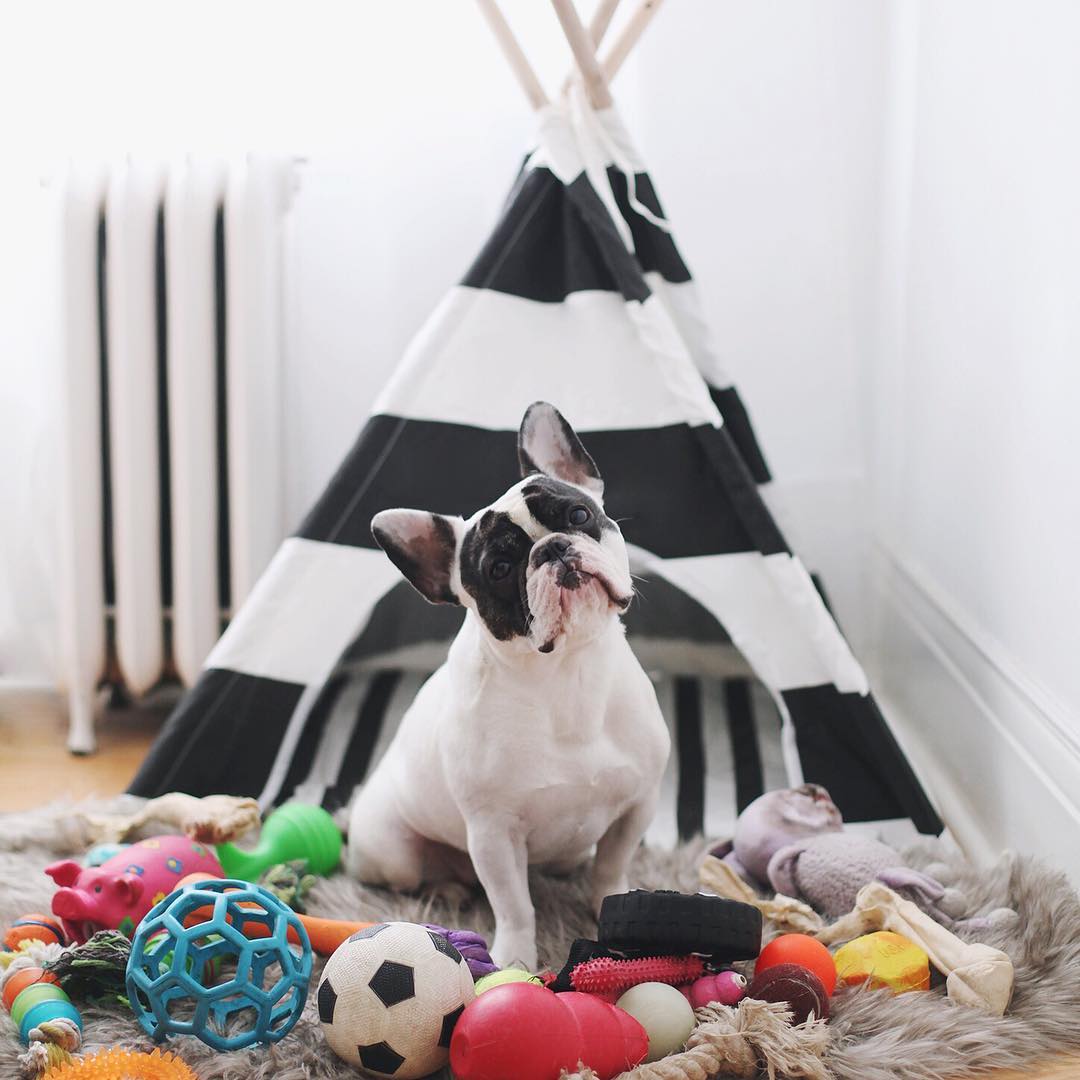Stop me if you’ve heard this one before.
Your pup is eating dinner while you’re tidying up around the apartment. You decide to nab that dust bunny that’s been living a few feet away from Fido’s food bowl, but as you bend down to grab it your pup starts growling. Angrily. At you, the provider of love, warmth, food, and shelter. “What’s going on?” You think to yourself, hurt and confused.
This, dear friends, is called resource guarding. I know because my dog, Griffey, is extremely anxious and insecure and displays guarding behaviors for numerous resources. Full disclosure: I’m no expert here. I’m just the curious owner of a slightly troubled dog and I want to take a deeper dive with you on the ins and outs of resource guarding: what it is, why dogs do it, and how to fix it.
Though it can vary from dog to dog and dogs may guard different articles (food, bed, toys, etc.), there’s an unmistakable behavioral progression to look for if you suspect your dog is exhibiting resource guarding tendencies.
First, your pup will freeze up. He’ll get a distant, glazed look in his eyes that shows he’s neither looking at his precious resource nor at you, his beloved owner. After that, he’ll accelerate his activity. If he was in the middle of breakfast, he’ll suddenly start eating much faster, like the youngest of 5 kids at the dinner table. If you linger, or continue to approach, you’ll get a low, rumbling growl.
That growl is the first part of this progression that truly tests me. It’s hard not to take it personally when your otherwise sweet puppy appears angry and feral, but you must remain calm and composed. Dogs are highly in tune with human emotions, and any negative energy you give off can cause a feedback loop with your pup that you don’t want to be a part of. Trust me.
The next step is snarling, where angry facial expressions accompany the audible growl. With a little more agitation, your pup will fire a warning shot in the form of a snap. (No, you didn’t avoid getting bitten that one time. If he wanted to bite you, he would have.) Snaps are not intended to make contact, but rather serve as a warning: “I’m feeling very threatened right now, so for both of our sakes you should probably take a step back.”
With all that said, the final action he might take is indeed a legitimate bite…but let’s hope you never let it get that far.
Though the evolutionary implications are not cut-and-dried, experts’ best guess to the origin of resource guarding makes a lot of sense. Think about it: if you were a wild dog and your pack’s survival hinged on your ability to hold onto the food you just killed, wouldn’t you do whatever it took to protect it? This starts to make even more sense when you realize that guarding behavior is more common in rescues like my beloved little monster Griffey.
When he was rescued, Griffey was found alone on a hillside in Puerto Rico. He was just 5 weeks old and weighed 4 pounds. While I can’t know for sure what the first month of his life was like, I can imagine that he had to fight for every scrap of food he found.
The good news is that even the worst cases of resource guarding can be treated as long as you’re patient and ready to put in the work.
It’s called counterconditioning.
Dogs, whether naturally or learned, have emotional responses to different stimuli. You’ve taken your dog on enough walks to know that when you grab the leash off the hook (stimulus) he’ll excitedly scamper over to you (emotional response) so he can sniff the great outdoors. Similarly, if you get too close to his food bowl (stimulus) while he’s eating, he might freeze up and start growling at you (emotional response). As we work to fix resource guarding, the idea is not to shut down the emotional response, but rather to alter it.
For example: when you get close to your dog’s food bowl, do so with a delicious treat in your hand. Right as he’s about to give you the growling treatment, you drop the treat. This will take repetition and precise timing, but the idea here is that eventually you want him to associate your coming near his food bowl mid-meal with the delivery of a treat, rather than with the potential of having his food taken away. If you’ve succeeded, he should be legitimately excited when you approach his bowl in the future.
The same idea, with slightly different variations, can be used on other resources such as toys or items that he’s particularly protective over.
To be clear, I am not at the end of this process with Griffey yet. And though I’ve seen some encouraging improvements, I also understand that the road ahead won’t be an easy one. But I’m doing my best to remain calm, patient, and determined, and I’m confident that eventually I’ll succeed.
Have you experienced resource guarding behaviors in your dog? What helped? Share your experiences with us below.
Image: @lifeofvi









